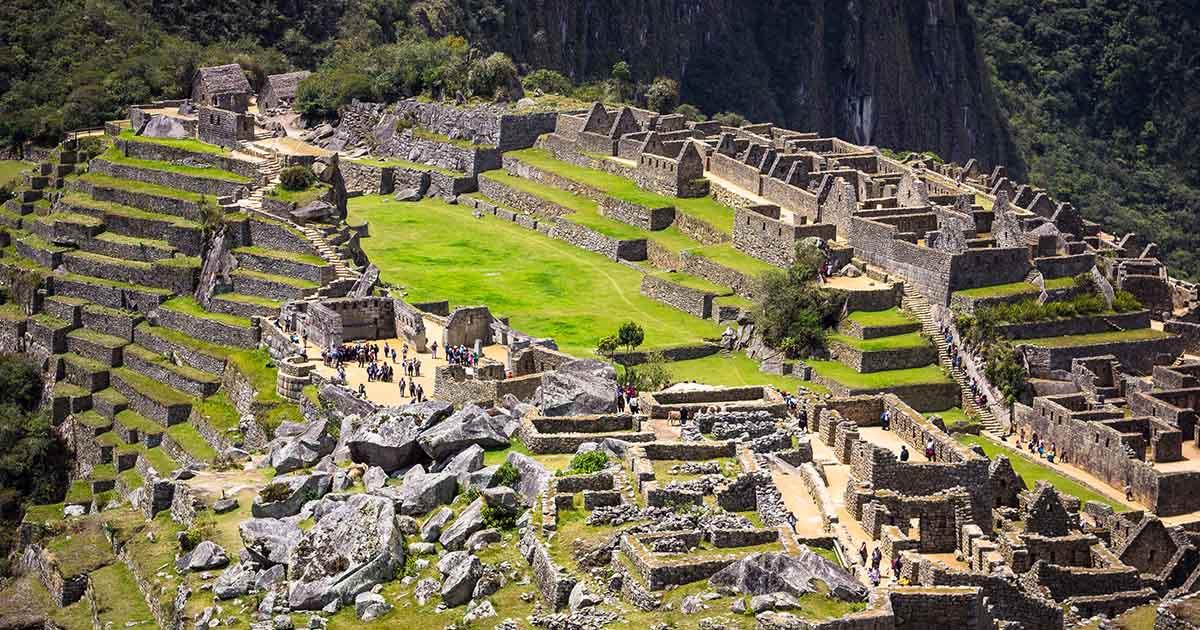
Have a trip to Peru coming up? Well, it’s time to brush up on your Machu Picchu facts!
Machu Picchu is the most well-known historic site in all of Peru—maybe even in all of South America. It’s also on many globetrotters’ bucket list travel destinations. But how much do we really know about the site? We are here to shine some light on the mystery and intrigue surrounding Peru’s greatest archaeological treasure.
Scholars believe that the Incas started constructing Machu Picchu around 1450 AD under Pachacuti Inca Yupanqui who ruled the Inca Empire from 1438 to 1471. This is a full millennium after the fall of the Roman Empire and less than a century before the Spanish conquistadors arrived in Peru.
The Incas were adept engineers and were able to build the entire citadel of Machu Picchu without using any mortar. Instead, they used a special technique called ashlar, which involves cutting stones so precisely that they lay on top of one another without any space between them. You wouldn’t even be able to slide a sheet of paper through the stones!
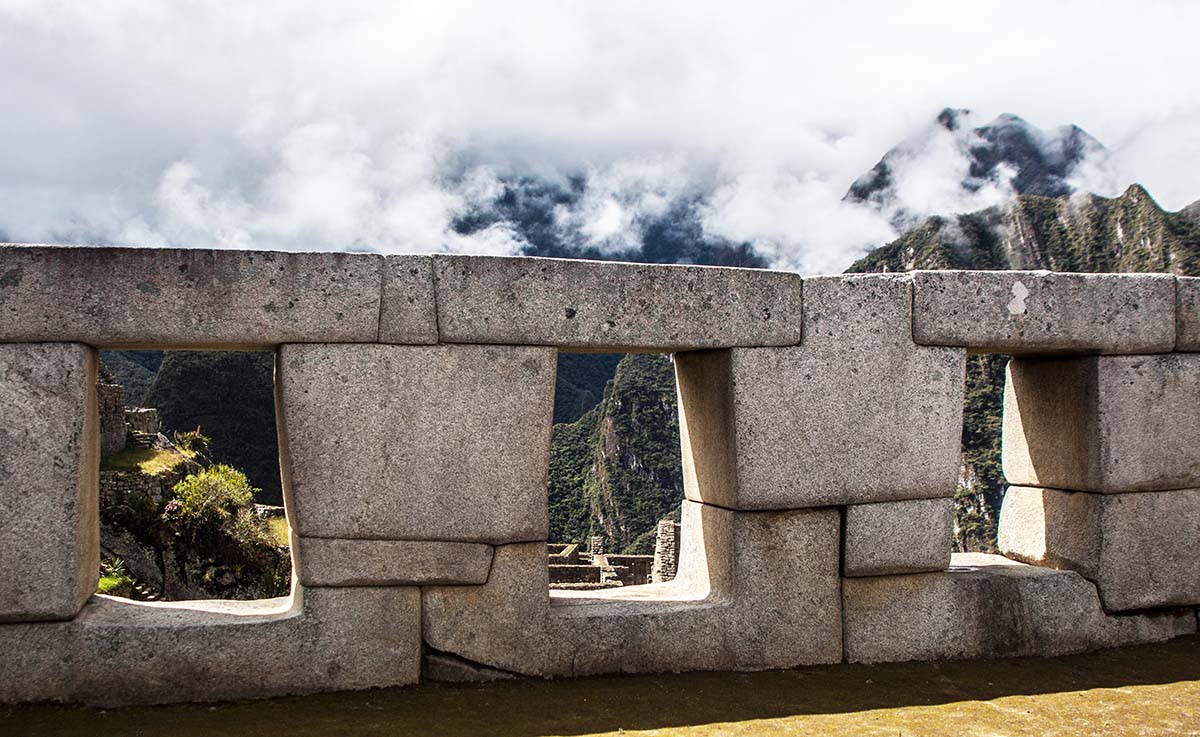
The Temple of the Three Windows displays typical trapezoidal Incan architecture. Photo by Peru For Less.
Here is where that last Machu Picchu fact becomes even more interesting! In general, Peru has high seismic activity, and Machu Picchu itself is located near two fault lines. Knowing this, the Incas used various techniques to make their buildings resistant to earthquakes. These included the ashlar technique mentioned above, as well as trapezoidal-shaped doors and windows, inward inclining walls, and bracing blocks.
The explorer Hiram Bingham III brought the ruins of Machu Picchu international recognition and titled his account of the exploration The Lost City of the Incas. However, the site was never truly “lost.” Many locals in the region knew it was there. In fact, a local innkeeper Melchor Arteaga guided Bingham to the site. Moreover, there were Quechua farmers who were still cultivating the terraces when Bingham showed up in 1911.
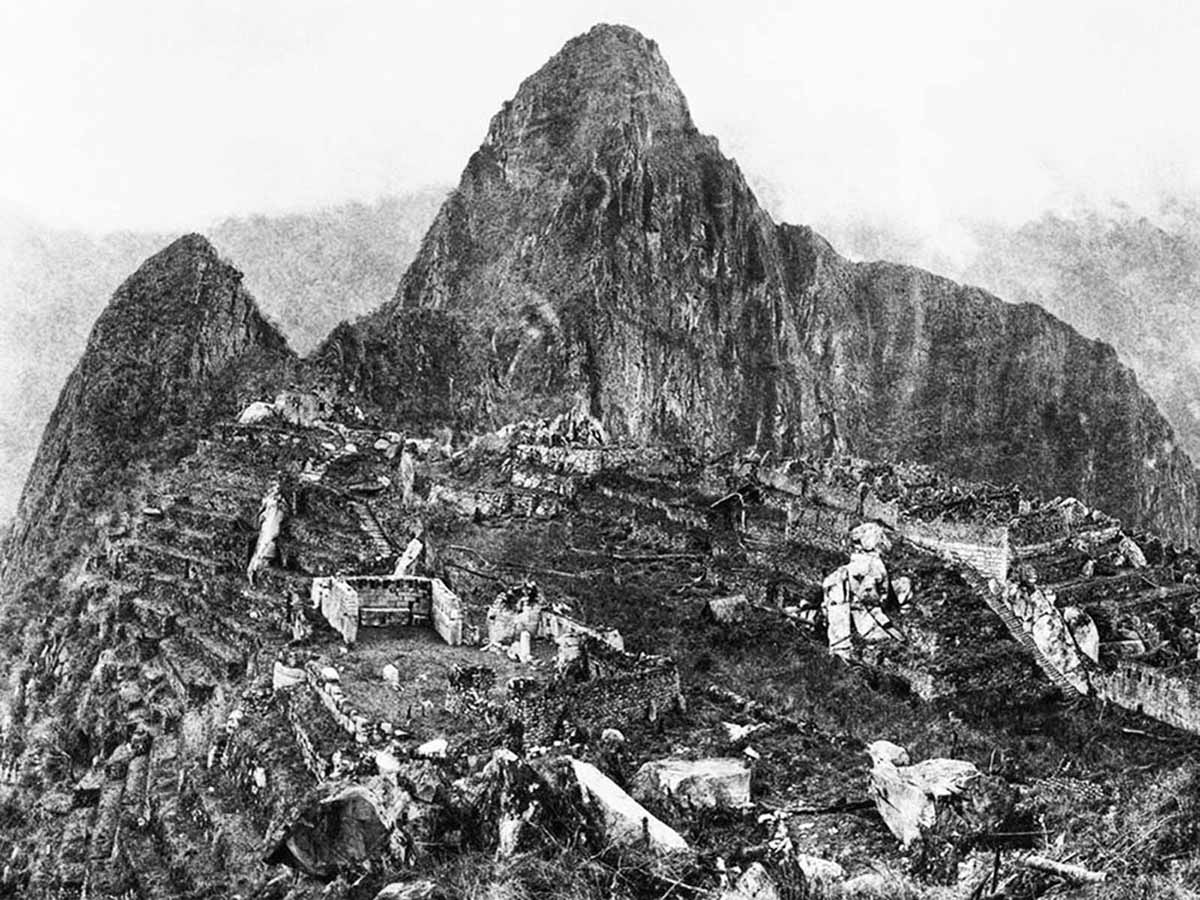
Photo of Machu Picchu taken in 1911. Photo by National Geographic.
The Incas didn’t have a writing system, so there are no written records of the people who lived there. Most archaeologists believe that the emperor Pachacuti had it built as a royal estate. However, some believe it was a retreat for high ranking religious leaders and scholars of the Inca empire.
Although the conquistadors introduced the Spanish language in the 16th century, many Andean people in Peru still speak a local language called Quechua. Quechua is the source for many place names throughout the country. Machu is Quechua for “old” or “old person.” Picchu refers to a conical-shaped solid structure and, in this case, interpreted as “mountain.”
Learn more about the Quechua people and their language here.
Machu Picchu Tours:
Hiram Bingham’s team collected thousands of artifacts from the ruins and sent them to Yale University during the scientific excavation of the site from 1912 to 1915. These artifacts included ceramics, jewelry, silver pieces, and human bones. The Peruvian government contested that the artifacts should be returned for years until Yale finally sent them back in 2012.
There are some amateur scholars that believe aliens built Machu Picchu. For them, it seems inconceivable that a people without iron tools, draft animals, or even the wheel could have lugged such large stones up the mountainside and built such magnificent structures. However, archeologists and scholars agree that the Incas, with their impressive engineering techniques and use of human labor, were more than capable of constructing the site without outside (or outer-worldly) help.
Many travelers worry about the effects of altitude sickness when traveling to Machu Picchu, but the site is actually at a lower altitude than Cusco. Machu Picchu sits at 7,970 feet (2,430 meters) while Cusco is located at 11,200 feet (3,400 meters). The threshold for altitude sickness symptoms is about 8,000 feet (2,500 meters). Unfortunately, you can’t just go directly to Machu Picchu since all transportation and trekking tours start in Cusco.
Because of its location on the edge of the Andes and the Amazon rainforest, Machu Picchu has a very unique climate. In contrast to Cusco’s relatively dry weather and barefaced mountains, Machu Picchu is lush and green and often encompassed by low hanging clouds and mist. You can even see a wide variety of subtropical species of brightly colored birds and flowers.
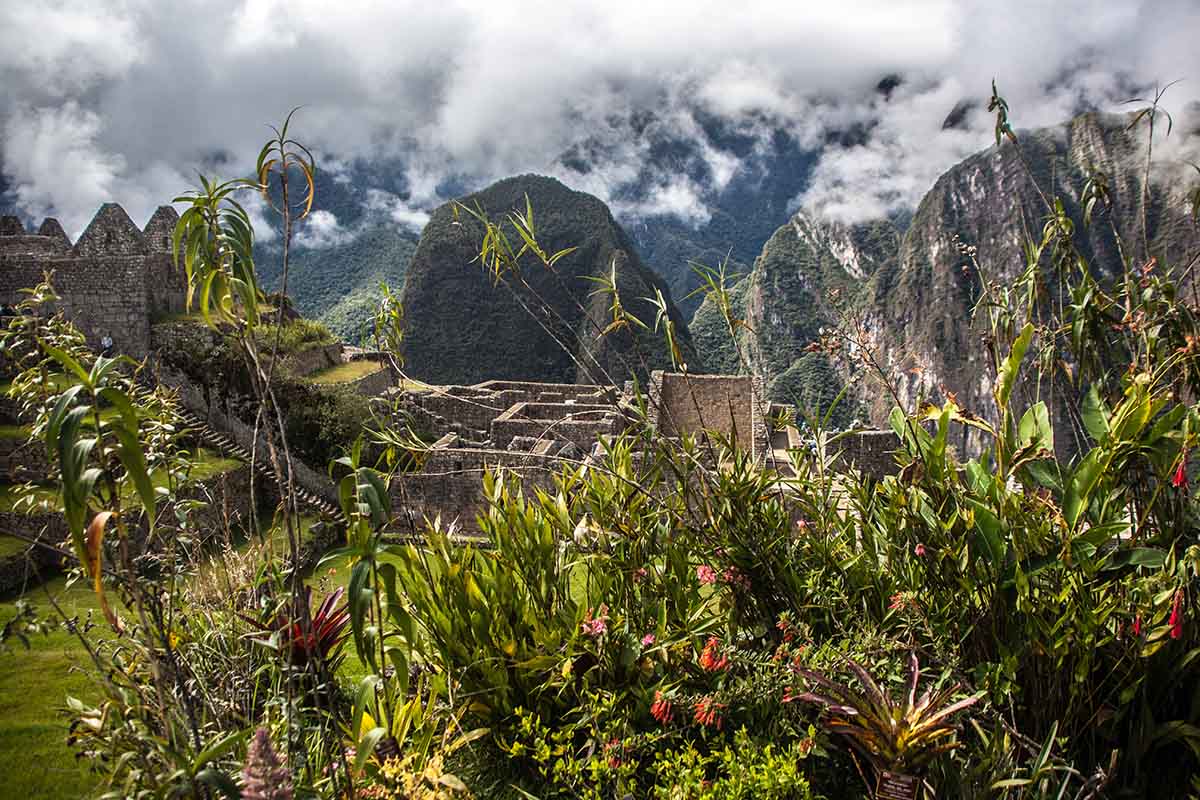
Typical cloud forest vegetation at Machu Picchu. Photo by Peru For Less.
Although the Incas brought llamas and alpacas with them to Machu Picchu and tourists today have fun taking selfies with llamas, neither species is native to this region of Peru. Llamas and alpacas prefer altitudes of 13,000 feet (4,000 m) and above. The llamas you see at Machu Picchu today—and even the grass they eat!—were brought in especially for tourism.

Llama looking over the Machu Picchu ruins. Photo by pclvv on Flickr.
In 1981, the Peruvian government named Machu Picchu a Historic Sanctuary. Two years later in 1983, UNESCO declared it a World Heritage Site. An internet poll in 2007 gave Machu Picchu a new international title as one of the New Seven Wonders of the World.
Here’s a fact you may not have heard about Machu Picchu. For a short time in the 1990s, the Peruvian government allowed helicopter flyovers. However, they quickly banned such flyover tours because of the damage they did to the native flora and fauna. The entire area is now a no-fly zone.
Because of Machu Picchu’s remote location in the mountainous cloud forest of Peru, there are only two ways to access the site. The first and most common way is to take a train from Cusco, which drops you off in Aguas Calientes (also known as Machu Picchu Pueblo) at the base of the mountain. You can then take a bus or walk up the rest of the way. The second way is to hike along the Inca Trail.
Nowadays most tourists enter through turnstiles near the main terraces of the ruins. However, the Incas used Inti Punku or the “Sun Gate” as the main entrance. The gate had significant religious meaning since the sun passes directly through it every year on the summer solstice.
You need to bring your passport for identification anyway, so why not get your passport stamped while you’re at it? Passports not only allow you entry into foreign countries but are a great way to scrapbook all the wonderful places you’ve visited!
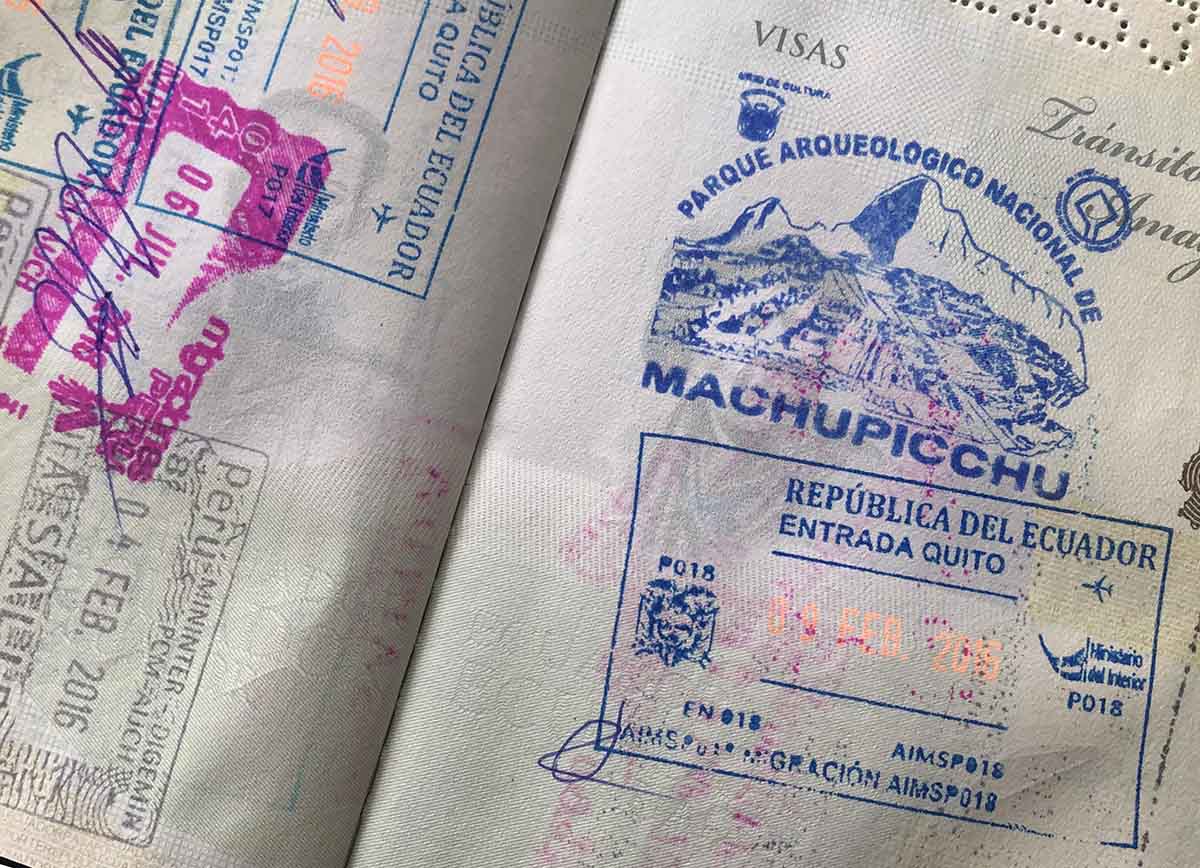
The official Machu Picchu passport stamp. Photo by Adriana Proaño from Peru For Less.
Many travelers planning their trip to Machu Picchu have heard about the hike to the top of Huayna Picchu. The peak is the classic backdrop of Machu Picchu postcards and has a frightening set of stone steps called the “death stairs.” But there is a second peak on the opposite side of the ruins called Machu Picchu Mountain, which also has an excellent aerial view of the ruins (and without any death stairs). Both peaks require a permit to climb.
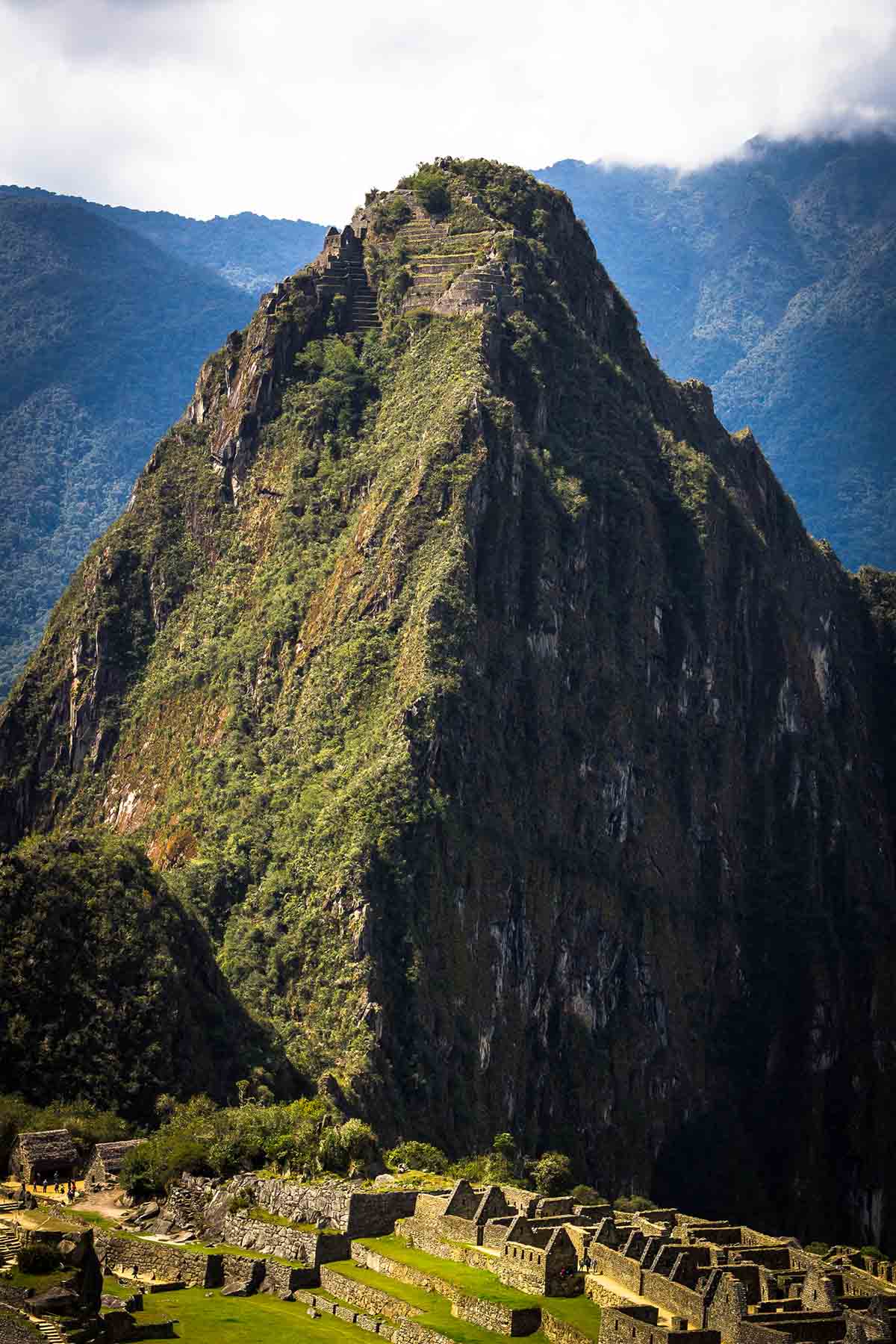
Huayna Picchu peak and Moon Temple ruins. Photo by Daniella Beccaria.
If you miss out on permits for Huayna Picchu or Machu Picchu Mountain, you can still get aerial views from the Sun Gate without a permit. There is also a short hike to the Inca Bridge if you’d like to see extra archeological structures but are not up for hiking. The trail to the Inca Bridge is relatively flat.
Learn more about the four hiking options mentioned above here.
In 2014, a trend called nude tourism made an appearance at the historic site with a handful of tourists detained for stripping down and taking naked photos in front of the Incan stonework. Various Peruvian cultural ministers and directors made statements to remind visitors that nudity was inappropriate at this sacred site and would undoubtedly upset other travelers.
The song “Kilimanjaro” from the 2010 Bollywood film Enthiran was actually filmed at Machu Picchu. The Indian government had to get involved in order to get permission from the Peruvian government to film at the site.
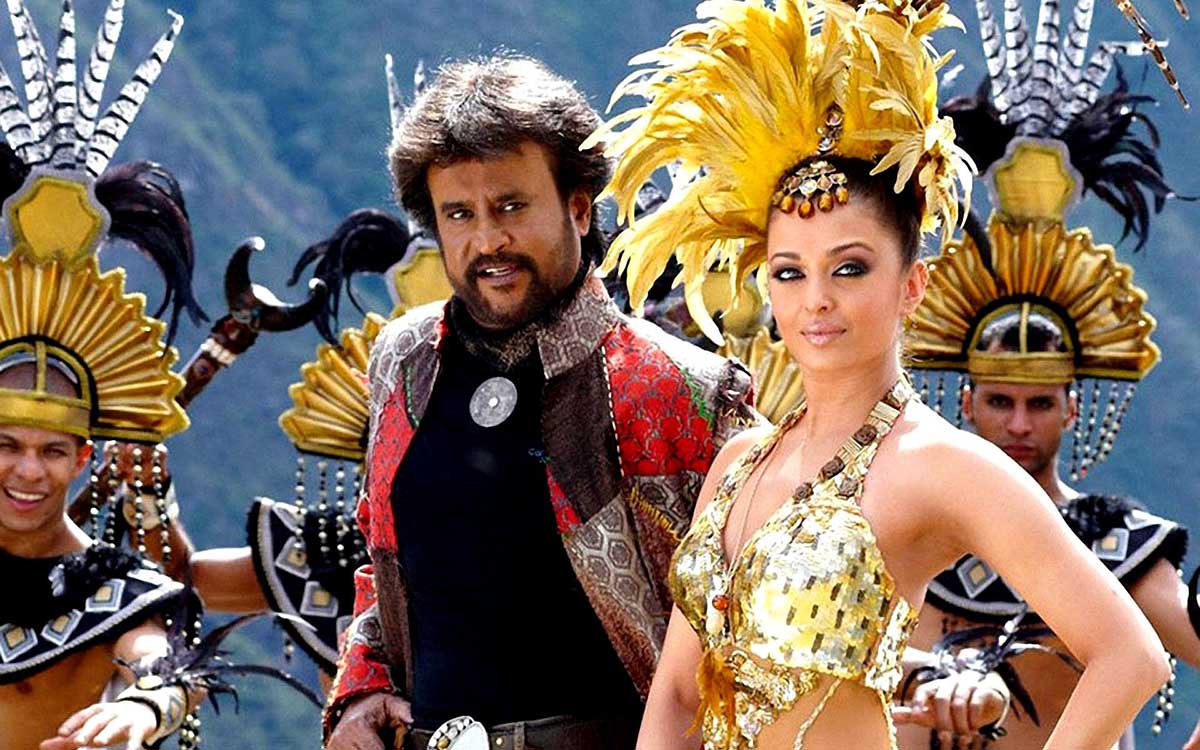
A still from the musical number “Kilimanjaro” from the Bollywood film Enthiran. Photo from The Times of India.
There you have it! The most interesting facts about Machu Picchu. You’ll be sure to appreciate the Incan citadel even more during your visit and impress your Machu Picchu guide with your knowledge.
Be sure to check out our Machu Picchu destination guide for more fascinating facts about this world wonder, or visit our list of Machu Picchu tours to start planning your dream trip today.
Happy traveling!

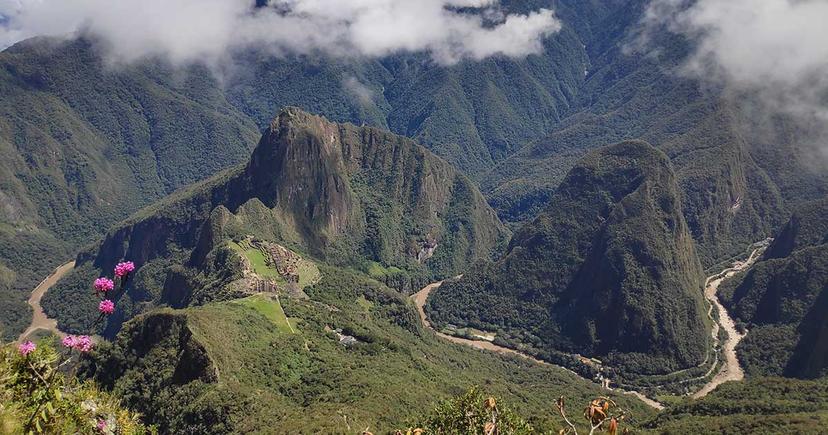
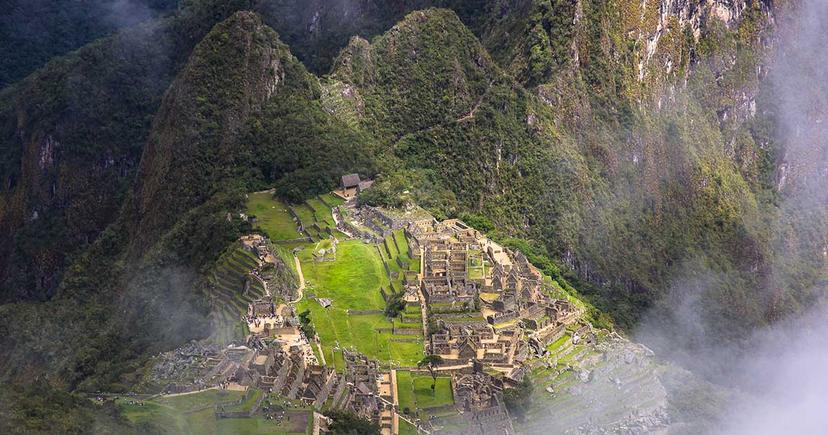
Email: [email protected]
Sign up to receive our newsletter for great articles, stunning photos, and special deals.